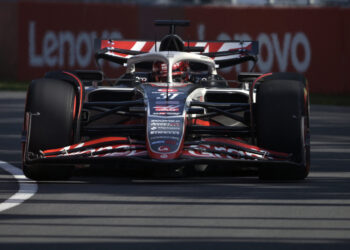As Formula 1 races into its season finale at Abu Dhabi’s Yas Marina Circuit, new data highlights the sport’s meteoric rise in global popularity, driven by a surge in female viewership, younger fans, and a dynamic sponsorship landscape.
A Gulf Expansion: More Races, More Fans
This year’s F1 calendar boasted four races in the Gulf region, surpassing the three hosted in the United States, signaling the sport’s deepening roots in emerging markets. Jeddah, which debuted on the schedule in 2021, has become a key player in F1’s expansion, with Saudi energy giant Aramco now a major sponsor of both the sport and Aston Martin.
Nielsen Sports data revealed significant growth in Saudi Arabia, with female interest climbing 11% and male interest up 10% compared to last year. Notably, the most dramatic increase came from fans aged 50-69, showcasing the sport’s cross-generational appeal.
Netflix’s Role: A Gateway to New Fans
Formula 1’s global growth can largely be attributed to the Netflix docu-series Drive to Survive, which continues to captivate audiences with its behind-the-scenes drama. Nielsen’s survey across 37 markets found that one in four F1 fans became hooked on the sport after watching the show.
This strategy of humanizing drivers and teams has led to impressive results. Today, 41% of F1 fans are women, and the fastest-growing demographic is the 16-24 age group, signaling a successful effort to broaden the sport’s appeal.
Sponsorship Boom: Big Dollars, Shorter Deals
The sport’s growing audience has spurred a sponsorship renaissance. The average team sponsorship deal now stands at $5.08 million, a 56% jump from pre-pandemic levels, though the average duration has dropped from 5.2 years to 3.2.
Sponsorship categories have diversified dramatically, with IT sponsors now contributing 20% of the spend, compared to just 3% in 2019. Financial services have also become a major player, increasing their share of total sponsorship revenue from 2% to 17%.
Top team title sponsors reap enormous benefits, generating over $6 million in media value per race on average, underscoring the immense marketing power of F1’s global platform.
Europe Holds Steady as New Markets Surge
Despite its growing appeal in newer markets like Saudi Arabia, Formula 1 continues to thrive in its traditional strongholds. Interest rose 2.3% in Britain and 4.5% in Germany compared to last year, even though Germany currently lacks both a home race and a winning driver.
A Future Defined by Innovation and Accessibility
Jon Stainer, Nielsen Sports’ global general manager, credits F1’s success to its innovative approach to fan engagement:
“Formula One is a perfect example of a rights owner innovating its relationship with fans. Growth of interest, especially among women and newer markets like Saudi Arabia, can be attributed largely to a shift in how teams and drivers are profiled today, and the access they are affording global audiences.”
With over 750 million fans worldwide, Formula 1 has cemented its status as the most popular annual sporting series. As McLaren and Ferrari prepare to battle for the Constructors’ Championship in Abu Dhabi, the future of F1 looks as dynamic as its track action, fueled by inclusivity, new markets, and a growing global fanbase.










